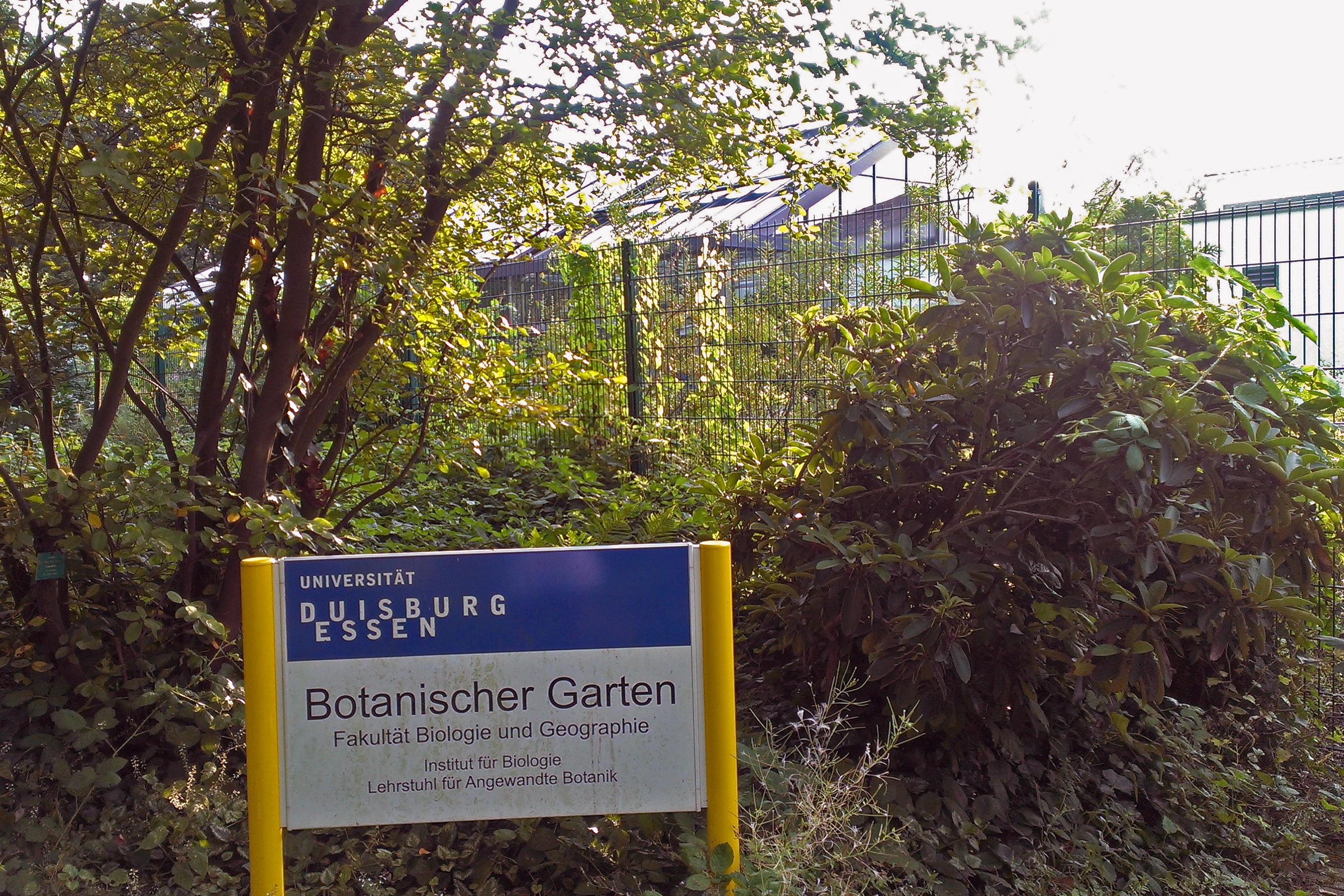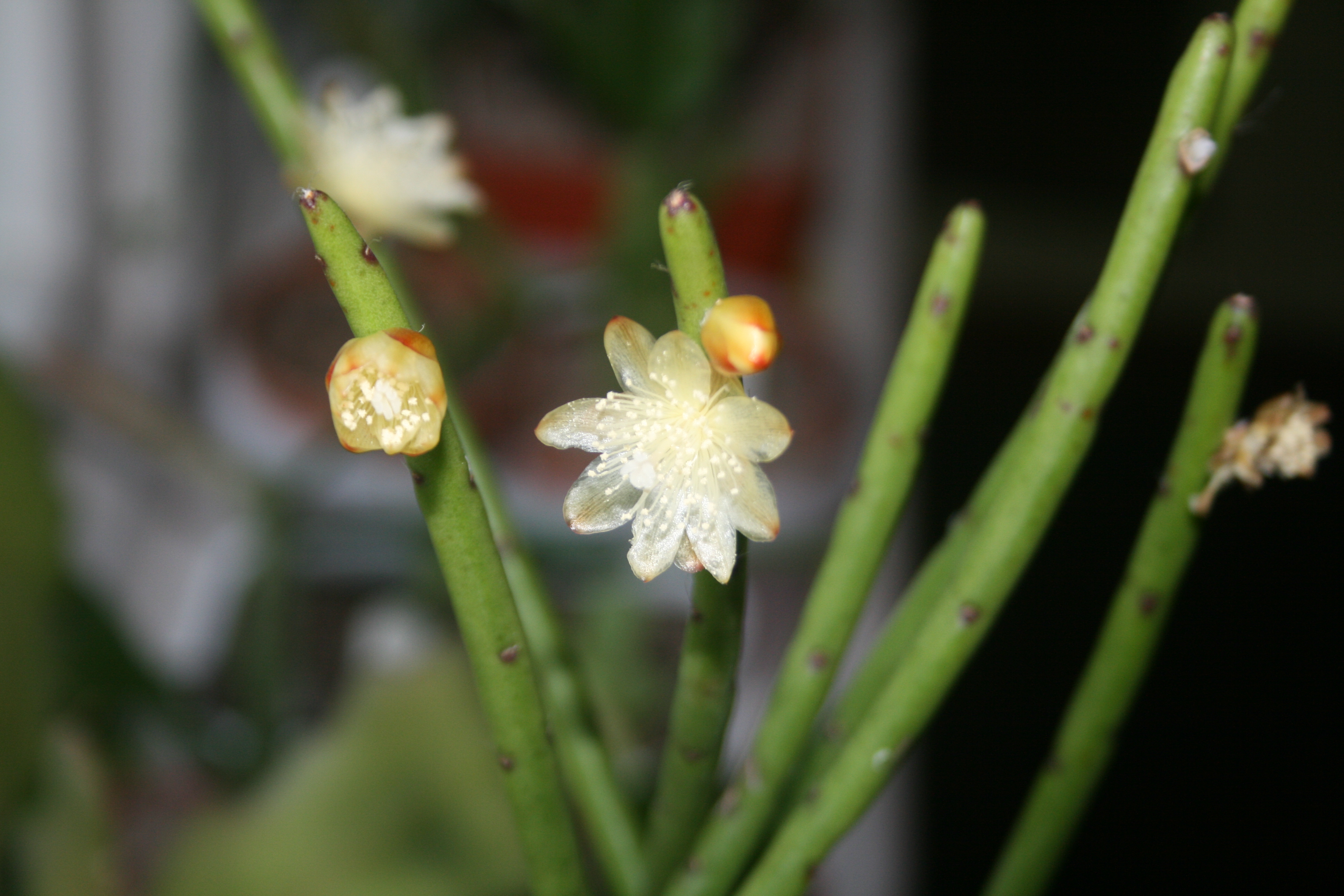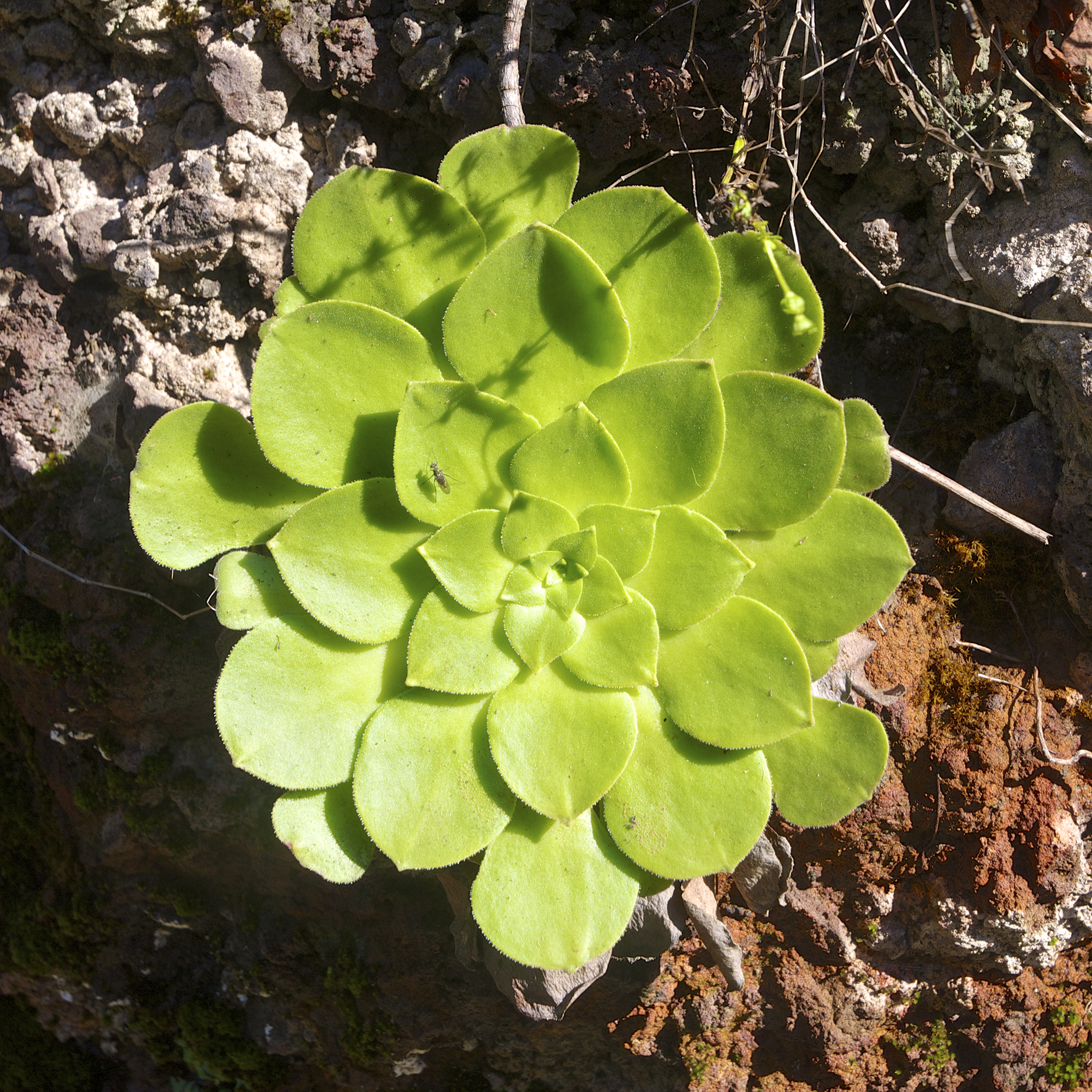|
Botanischer Garten Der Universität Duisburg-Essen
The Botanischer Garten der Universität Duisburg-Essen ( is a botanical garden maintained on the Essen campus of the University of Duisburg-Essen, North Rhine-Westphalia, Germany. It formerly was located at Henri-Dunant-Strasse 65. Now it is located next to the Grugapark area at Kühlshammerweg 30. The garden is maintained for research and educational uses, and is not open to the public. The garden was established in the early 1980s by Dr. Guido Benno Feige, Professor of Botany. Today, it cultivates approximately 3,500 species in an outdoor area () and greenhouses (). The garden contains about 170 species of carnivorous plants, one of the largest such collections in Germany, as well as good collections of Euphorbia (300 species), Mediterranean plants (250 species), Haworthia and Aloe (65 species), as well as Aeonium, Conophyllum (40 species), Rhipsalis, and rare plants from Socotra. See also * Botanischer Garten Grugapark * List of botanical gardens in Germany This is a list of ... [...More Info...] [...Related Items...] OR: [Wikipedia] [Google] [Baidu] |
Aloe
''Aloe'' (; also written ''Aloë'') is a genus containing over 650 species of flowering succulent plants.WFO (2022): Aloe L. Published on the Internet;http://www.worldfloraonline.org/taxon/wfo-4000001341. Accessed on: 06 Nov 2022 The most widely known species is '' Aloe vera'', or "true aloe". It is called this because it is cultivated as the standard source for assorted pharmaceutical purposes. Other species, such as ''Aloe ferox'', are also cultivated or harvested from the wild for similar applications. The APG IV system (2016) places the genus in the family Asphodelaceae, subfamily Asphodeloideae. Within the subfamily it may be placed in the tribe Aloeae.Stevens, P.F. (2001 onwards).Asphodelaceae. ''Angiosperm Phylogeny Website''. Retrieved 2016-06-09. In the past, it has been assigned to the family Aloaceae (now included in the Asphodeloidae) or to a broadly circumscribed family Liliaceae (the lily family). The plant ''Agave americana'', which is sometimes called "Americ ... [...More Info...] [...Related Items...] OR: [Wikipedia] [Google] [Baidu] |
Botanical Gardens In Germany
Botany, also called , plant biology or phytology, is the science of plant life and a branch of biology. A botanist, plant scientist or phytologist is a scientist who specialises in this field. The term "botany" comes from the Ancient Greek word (''botanē'') meaning "pasture", "herbs" "grass", or "fodder"; is in turn derived from (), "to feed" or "to graze". Traditionally, botany has also included the study of fungi and algae by mycologists and phycologists respectively, with the study of these three groups of organisms remaining within the sphere of interest of the International Botanical Congress. Nowadays, botanists (in the strict sense) study approximately 410,000 species of land plants of which some 391,000 species are vascular plants (including approximately 369,000 species of flowering plants), and approximately 20,000 are bryophytes. Botany originated in prehistory as herbalism with the efforts of early humans to identify – and later cultivate – edible, medici ... [...More Info...] [...Related Items...] OR: [Wikipedia] [Google] [Baidu] |
List Of Botanical Gardens In Germany ...
This is a list of botanical gardens in Germany. This list is intended to contain all significant botanical gardens and arboreta in Germany. List See also * List of botanical gardens References Zentralregister biologischer Forschungssammlungen in DeutschlandConvention on Biological Diversity: Germany External links *{{Commonscat-inline, Botanical gardens in Germany ! ! Germany Botanical gardens A botanical garden or botanic gardenThe terms ''botanic'' and ''botanical'' and ''garden'' or ''gardens'' are used more-or-less interchangeably, although the word ''botanic'' is generally reserved for the earlier, more traditional gardens, an ... [...More Info...] [...Related Items...] OR: [Wikipedia] [Google] [Baidu] |
Botanischer Garten Grugapark
The Botanischer Garten Grugapark is a municipal botanical garden located in the Grugapark at Virchowstraße 167a, Essen, North Rhine-Westphalia, Germany. It is open daily; an admission fee is charged. The garden was established in 1927 for recreation, teaching, and research. Parts of the garden were destroyed in World War II but gradually rebuilt and re-designed for the Essen Bundesgartenschau of 1965. Today its major sections are as follows: * Alpinum (garden), Alpinum - mountain plants from the Caucasus, the Carpathians, and the Apennines, including gentians, alpine violets, Aster (genus), asters, and pine trees, as well as Taiwania. * Asia section - dove tree, Japanese elm, and Asian hydrangeas, maples, and walnut trees. * Climbing plants - self-described as Germany's largest collection of climbing plants, including clematis, honeysuckle, climbing hydrangea, wolfberry, and wild vines. * Conifers (planted 1927) - self-described as one of Europe's largest collections, including ... [...More Info...] [...Related Items...] OR: [Wikipedia] [Google] [Baidu] |
Socotra
Socotra or Soqotra (; ar, سُقُطْرَىٰ ; so, Suqadara) is an island of the Republic of Yemen in the Indian Ocean, under the ''de facto'' control of the UAE-backed Southern Transitional Council, a secessionist participant in Yemen’s ongoing civil war. Lying between the Guardafui Channel and the Arabian Sea and near major shipping routes, Socotra is the largest of the four islands in the Socotra archipelago. Since 2013, the archipelago has constituted the Socotra Governorate. The island of Socotra represents around 95% of the landmass of the Socotra archipelago. It lies south of the Arabian Peninsula, but is considered to be part of Africa. The island is isolated and home to a high number of endemic species. Up to a third of its plant life is endemic. It has been described as "the most alien-looking place on Earth." The island measures in length and in width. In 2008 Socotra was recognised as a UNESCO World Heritage Site. In 2018, the United Arab Emirates invaded ... [...More Info...] [...Related Items...] OR: [Wikipedia] [Google] [Baidu] |
Rhipsalis
''Rhipsalis'' is a genus of epiphytic flowering plants in the cactus family, typically known as mistletoe cacti. They are found in parts of Central America, the Caribbean and northern regions of South America. They also inhabit isolated locations in Africa and Asia, and are the only cactus group naturally occurring in the Old World. This is the largest and most widely distributed genus of epiphytic cacti (those which live on other plants without damaging them). The scientific name ''Rhipsalis'' derives from the Ancient Greek term for wickerwork, referring to the plants' morphology. History The genus was described by Joseph Gaertner in 1788. But when he described the plant, he had in fact not realised it was a cactus. Instead, he assumed he had found a new species of ''Cassytha'',The original spelling in publication is ''cassutha'', but this is presumably a typographical error. a parasitic laurel from a completely different plant family. Ecology and distribution ''Rhipsalis'' i ... [...More Info...] [...Related Items...] OR: [Wikipedia] [Google] [Baidu] |
Conophyllum
''Mitrophyllum'' is a genus of succulent plants of the family Aizoaceae, indigenous to the arid region around the Richtersveld, on the border of South Africa and Namibia. Description The species generally grow stems, at the top of which two succulent leaves appear. Similar to the closely related genera of ''Monilaria'' and ''Meyerophytum'', these leaf-pairs alternate consecutively between two different types of leaf-growth (heterophylly) and during the exceptionally hot summer they remain inactive in a dry sheath. When fused together into a cone-shaped corpuscle, this leaf pair is referred to as the plant's ''"mitre"'', and this is the origin of the genus name. The two separate leaves of the free leaf-pair are rounded-triangular to tongue-shaped. The fused leaf-pair forms a cone-shaped to cylindrical corpuscle, which bears two smaller ear-like anthers at the top. This fused corpuscle dries out in the plant's dormancy period, eventually becoming a papery sheath in which the new ... [...More Info...] [...Related Items...] OR: [Wikipedia] [Google] [Baidu] |
Aeonium
''Aeonium'', the tree houseleeks, is a genus of about 35 species of succulent, subtropics, subtropical plants of the family (biology), family Crassulaceae. Many species are popular in horticulture. The genus name comes from the ancient Greek αἰώνιος / aiōnios (ageless). While most of them are native plant, native to the Canary Islands, some are found in Madeira, Cape Verde, Morocco, in East Africa (Ethiopia, Somalia, Uganda, Tanzania and Kenya) and Yemen. Description The succulent Leaf, leaves are typically arranged on a Basal (anatomy), basal stem, in a dense, spreading rosette. A feature which distinguishes this genus from many of its relatives is the manner in which the flowers bear free petals, and are divided into 6 or 12 sections. Each rosette produces a central inflorescence only once, and then dies back (though it will usually branch or offset to produce ensuing rosettes). Low-growing ''Aeonium'' species are ''Aeonium tabuliforme, A. tabuliforme'' and ''Aeon ... [...More Info...] [...Related Items...] OR: [Wikipedia] [Google] [Baidu] |
Haworthia
''Haworthia'' is a large genus of small succulent plants endemic to Southern Africa (Mozambique, Namibia, Lesotho, Eswatini and South Africa). Like the aloes, they are members of the subfamily Asphodeloideae and they generally resemble miniature aloes, except in their flowers, which are distinctive in appearance. They are popular garden and container plants. Description and characteristics ''Haworthias'' are small succulent plants, forming rosettes of leaves from to exceptionally in diameter, depending on the species. These rosettes are usually stemless but in some species stems reach up to . The inflorescences of some species may exceed in height. The plants can grow solitary or can be clump-forming. Many species have firm, tough, fleshy leaves, usually dark green in colour, whereas others are softer and contain leaf windows with translucent panels through which sunlight can reach internal photosynthetic tissues. Their flowers are small, and generally white. Though ... [...More Info...] [...Related Items...] OR: [Wikipedia] [Google] [Baidu] |
Botanical Garden
A botanical garden or botanic gardenThe terms ''botanic'' and ''botanical'' and ''garden'' or ''gardens'' are used more-or-less interchangeably, although the word ''botanic'' is generally reserved for the earlier, more traditional gardens, and is the more usual term in the United Kingdom. is a garden with a documented collection of living plants for the purpose of scientific research, conservation, display, and education. Typically plants are labelled with their botanical names. It may contain specialist plant collections such as cactus, cacti and other succulent plants, herb gardens, plants from particular parts of the world, and so on; there may be greenhouses, shadehouses, again with special collections such as tropical plants, alpine plants, or other exotic plants. Most are at least partly open to the public, and may offer guided tours, educational displays, art exhibitions, book rooms, open-air theatrical and musical performances, and other entertainment. Botanical gard ... [...More Info...] [...Related Items...] OR: [Wikipedia] [Google] [Baidu] |
Mediterranean
The Mediterranean Sea is a sea connected to the Atlantic Ocean, surrounded by the Mediterranean Basin and almost completely enclosed by land: on the north by Western and Southern Europe and Anatolia, on the south by North Africa, and on the east by the Levant. The Sea has played a central role in the history of Western civilization. Geological evidence indicates that around 5.9 million years ago, the Mediterranean was cut off from the Atlantic and was partly or completely desiccated over a period of some 600,000 years during the Messinian salinity crisis before being refilled by the Zanclean flood about 5.3 million years ago. The Mediterranean Sea covers an area of about , representing 0.7% of the global ocean surface, but its connection to the Atlantic via the Strait of Gibraltar—the narrow strait that connects the Atlantic Ocean to the Mediterranean Sea and separates the Iberian Peninsula in Europe from Morocco in Africa—is only wide. The Mediterranean Sea ... [...More Info...] [...Related Items...] OR: [Wikipedia] [Google] [Baidu] |







.jpg)
